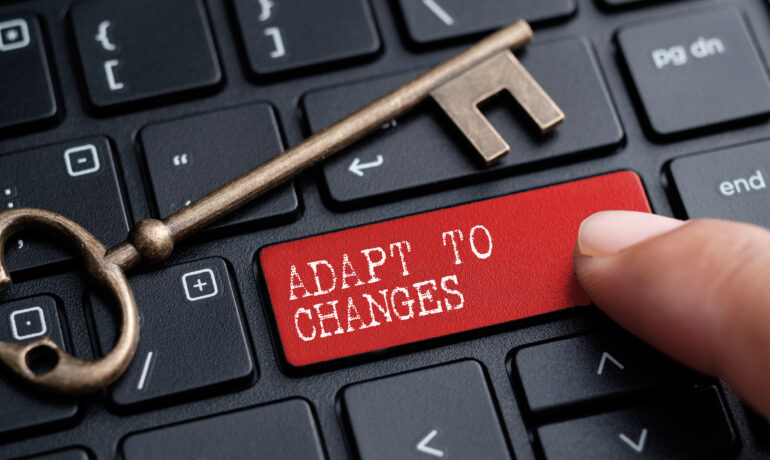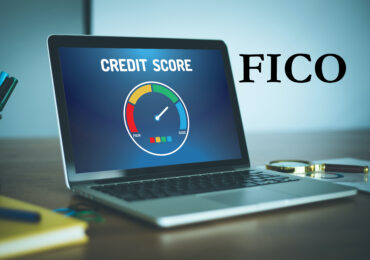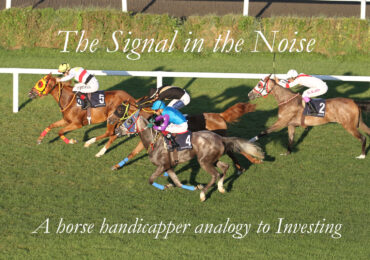The S&P 500 Index returned 12.15% and the S&P Global Broad Market Index returned 15.93% in the quarter ended December 31, 2020.1
In our last letter, we used a parable about a farmer to make the point that the future is incredibly difficult to predict. Furthermore, we showed that we can’t even know whether what has already happened will ultimately be positive or negative for our lives, much less our portfolios, because of the web of interacting knock-on effects that each event creates. Systems theorists have a name for the systems that drive this unpredictable future: complex. Unlike in simple systems, where only a few variables drive the outcome and so the outcome can be predicted in advance, complex systems are fundamentally different. Some exhibit behavior that is extremely sensitive to initial conditions (e.g. the proverbial butterfly flapping its wings can affect the timing and trajectory of a hurricane that occurs two weeks later halfway across the world), some have emergent properties (e.g. the brain is made up of a bunch of simple neurons that are connected in such a way that the phenomenon of consciousness emerges), and some depend on so many variables that they exceed our computational capacity (e.g. mountain or even anthill avalanches).2
As if this state of affairs weren’t problematic enough for the planners among us, the systems that most impact our future are human ones, and these are examples of a special class of systems that are not just complex but adaptive as well. In other words, these complex adaptive systems not only possess one or more of the three characteristics described above but they are also comprised of at least some components that can learn and change based on their experiences (in this case, humans), making them exponentially more difficult to predict in both the short and long term. For instance, while we can’t predict the weather very well, we can at least be confident that the components in a weather system will react to each other in predictable ways. Water molecules don’t decide they will freeze instead of boil in response to rising temperatures. Humans aren’t like this. Depending on their past experiences or their current mood, they are prone to react in completely opposite ways to the same event. For example, in response to rising home prices, humans may do a cash-out refinancing in one instance but pay down debt in another, and, many times, there’s no good explanation for this difference in behavior. Additionally, because of the human capacity for innovation, it’s much harder than with a weather system to even understand the future possibility space. When Thomas Malthus tried to model how many people could live on the planet and how well they would live, neither he nor anyone else predicted a number of critical human achievements. For instance, he predicted neither the discovery of oil nor the creation of technology to extract energy from it. Neither did he predict germ theory and the development of antibiotics and vaccines. And he certainly didn’t predict new forms of transportation such as the automobile, flight, and space travel. Finally, he couldn’t have even begun to conceive of a major risk to this prosperity: the invention of the nuclear bomb. Similarly, our futures are likely to be filled with positives and negatives that are currently unimaginable to us.
As investors, therefore, it’s important to own companies with cultures, incentive structures, and product sets that are able to adapt and profitably evolve as the complex adaptive systems in which they operate throw up new challenges and changing conditions. We believe many of our companies have demonstrated this adaptability throughout their histories and, in the remainder of this letter, we highlight a few of the key components that have enabled this success.
First, we believe successful adaptation requires a strong and well-protected core. There’s an old saying that, in order to finish first, you must first finish. As a result, we look for businesses that produce high and stable economic returns and that possess conservative balance sheets. These characteristics (high current profitability, abundant cash, and low debt) give a company many degrees of freedom when unexpected economic or competitive threats present themselves and make it much more likely they will be able to successfully adjust their business models to the new conditions.
Second, we prefer businesses with long histories of high and stable economic returns. Any institution that has thrived for many decades possesses vast amounts of embedded knowledge about how to successfully operate in numerous economic, competitive, and societal environments. While we believe our mental models around pricing power, networks, and culture identify much of this embedded knowledge, we recognize that our models of the world will always be incomplete and partially incorrect. Therefore, a long history of success serves as an important additional signal that we’re on the right track.
Third, we want a manager who recognizes that the high-performing institution he or she stewards is already finely tuned to its current environment, that it’s not completely understandable how and why that’s the case, and that, therefore, most changes to the culture, systems, and business processes will likely decrease the company’s fitness. But we also want the manager to recognize that the environment in which the institution operates does change over time, so the strategy of changing nothing is almost certain to fail. The key, then, from our point of view, is to create a culture that respects and nurtures the core brands, products, and systems but that also encourages constant and decentralized small-scale experimentation and creativity. We think the below quote from an interview with Bernard Arnault, founder of LVMH, exemplifies this approach:
Our strategy is to trust the creators. You have to give them leeway. When a creative team believes in a product, you have to trust the team’s gut instinct. That is the case with a perfume we launched this year: Flower, by Kenzo. We put it forward not because of the tests but because the team believed in it. It’s a very special creation. In the tests, people did not know what to make of it—the shape of the bottle is different, and its signature flower is a poppy, which has no scent. It’s not like anything else. But it’s a fantastic product, and it’s been an unbelievable success for the company: The Kenzo Fragrance Group’s sales rose 75% in the first six months of 2001, based largely on the success of Flower. That’s why you should listen to focus groups with only one ear.
When you give creative people as much freedom and control as LVMH does, do you have to be prepared to accept some failures?
Well, we don’t like failures. We try to avoid them. That is why, with many of our new products, we make a limited number. We do not put the entire company at risk by introducing all new products all the time. In any given year, in fact, only 15% of our business comes from the new; the rest comes from traditional, proven products—the classics.
Vuitton is a perfect example. This year, Marc Jacobs came up with the graffiti design, and it was a big departure for the line. Did you see it? It is beautiful and crazy, right? It does not look like Vuitton at first glance; who would have thought of that on suitcases? But we only had that on several items—for which, by the way, there is now a waiting list worldwide. The rest of the products were Vuitton that you could have bought last year, or five years ago, or ten years from now. They are legacy pieces.3
Hermes, another of our luxury goods companies, takes this philosophy of protecting the core while experimenting at the margins all the way down to the store level, as the following quote illustrates:
Store managers are responsible for their own store collections and are offered the freedom of purchase to meet specific needs of their customers. Twice a year, 1,000 store representatives from its global stores come to Paris for an event called “Podium”. Each flagship is instructed to pick at least one item from product categories beyond the common ones (handbags, scarves, ties, fragrances, watches), which is an attempt by the company to push every flagship store to showcase and sell complementary products. This adds to the allure of the Hermès brand as not all products are available in each store and the online store only offers a selection of the company’s products. 4
Again, we think the key is to respect the core but experiment at the margins. Both LVMH’s 85% legacy and 15% new product mix as well as Hermes’s meaningful but not endless store-level flexibility are great examples of this principle in action.
Fourth, we think management should have processes and incentives that facilitate the spreading of successful experiments to the rest of the organization and the discarding of the unsuccessful ones. So, we look for evidence the company is aggressively investing in attractive growth areas or business model transitions even when this investment will depress short-term profits. Additionally, we look for evidence that the business is willing to disrupt or cannibalize existing lines of business, even if these business lines were once core to the company’s business model. Numerous companies in our portfolio exhibit this behavior.
For example, the software companies we own (Microsoft, Adobe, and Intuit) made a bet that they could better serve their customers, increase customer satisfaction, and increase the lifetime value of their customers by switching from a model where they sold periodic software upgrades to a cloud-based subscription model. Because the yearly subscription cost was significantly lower than the cost of the one-time software upgrades, this transition resulted in a large drop in short-term profit expectations. However, all three software companies were willing to take this short-term pain because of the clear long-term benefit.
An even more striking example is Charles Schwab, which first came to prominence as a discount broker that made almost all its money off trading revenues. But, as the industry has evolved over time, it has transitioned from disrupting older Wall Street business models to disrupting itself. In order to grow its burgeoning asset management fee business, Charles Schwab began relentlessly disrupting its trading business and, as of last fall, had decreased commissions on most trades all the way to zero. Along the way, in the service of growing its net interest income business (where it earns the difference between the small amount it pays on clients’ cash and the larger amount it makes by investing these funds in mostly investment grade securities and margin loans), Schwab then began disrupting that very same asset management fee business that it was spending so much money and effort to build by introducing increasingly lower-cost asset management products.
Psychologically and organizationally, it’s incredibly difficult to destroy a business that has hugely benefited you, and, as a result, few companies are able to, even when they see the writing on the wall. But, eventually, a major business model change will be absolutely necessary, and the examples of our software companies and Charles Schwab show the power, wisdom, and large potential payoffs of overcoming the many hurdles involved.
Fifth, and finally, we look for an ownership structure that not only protects managers from short-term-oriented corporate raiders but also actively incentivizes them to think long-term. As a result, we prefer founder and family-owned companies with a history of treating minority shareholders fairly. We also favor companies where the management has a significant percentage of his or her net worth invested in the company, especially if this ownership is primarily in the form of stock and not stock options, which can sometimes create lottery-like payoffs that encourage reckless behavior.
Conclusion
Just as our companies have to respond to future surprises, we, as stewards of your capital, have to be similarly willing and able to adapt. As conditions change, innovation occurs, and the world evolves, some important industries of today will wither and die. Some cultures of iconic companies will become stultified or too short-term focused, and their businesses will slowly erode. In their place, new industries and aggressive young start-ups will emerge. Our job is to evaluate all these new developments and to adjust the portfolio mix accordingly, selling the businesses that can’t or won’t evolve and buying the ones in new industries that we believe can produce high and sustainable returns (usually as a result of owning a dominant network in an industry that we think can grow at least as fast as GDP over time). As we reflect back over our time managing portfolios, while we’ve made mistakes, we believe we’ve successfully navigated many of the large changes in the economy such as the decline in the fossil fuel and traditional media industries and the rise of the internet economy, and we’re cautiously optimistic that our strategy of blocking out short-term noise and focusing firmly on the long-term will continue to bear fruit in the years ahead.
As always, should you have any questions or need assistance, please do not hesitate to call or email us. Thank you for your continued trust and confidence in YCG, know we are invested right alongside you, and we hope you have a wonderful start to the new year!
Sincerely,
The YCG Team
Disclaimer: The specific securities identified and discussed should not be considered a recommendation to purchase or sell any particular security nor were they selected based on profitability. Rather, this commentary is presented solely for the purpose of illustrating YCG’s investment approach. These commentaries contain our views and opinions at the time such commentaries were written and are subject to change thereafter. The securities discussed do not necessarily reflect current recommendations nor do they represent an account’s entire portfolio and, in the aggregate, may represent only a small percentage of an account’s portfolio holdings. A complete list of all securities recommended for the immediately preceding year is available upon request. These commentaries may include “forward looking statements” which may or may not be accurate in the long-term. It should not be assumed that any of the securities transactions or holdings discussed were or will prove to be profitable. S&P stands for Standard & Poor’s. All S&P data is provided “as is.” In no event, shall S&P, its affiliates or any S&P data provider have any liability of any kind in connection with the S&P data. MSCI stands for Morgan Stanley Capital International. All MSCI data is provided “as is.” In no event, shall MSCI, its affiliates or any MSCI data provider have any liability of any kind in connection with the MSCI data. Past performance is no guarantee of future results.
1 For information on the performance of our separate account composite strategies, please visit www.ycginvestments.com/performance. For information about your specific account performance, please contact us at (512) 505-2347 or email [email protected]. All returns are in USD unless otherwise stated.
2 See https://en.wikipedia.org/wiki/Complex_system for a more thorough discussion of the properties of complex systems.
3 See https://hbr.org/2001/10/the-perfect-paradox-of-star-brands-an-interview-with-bernard-arnault-of-lvmh.
4 https://martinroll.com/resources/articles/strategy/hermes-the-strategy-behind-the-global-luxury-success/




